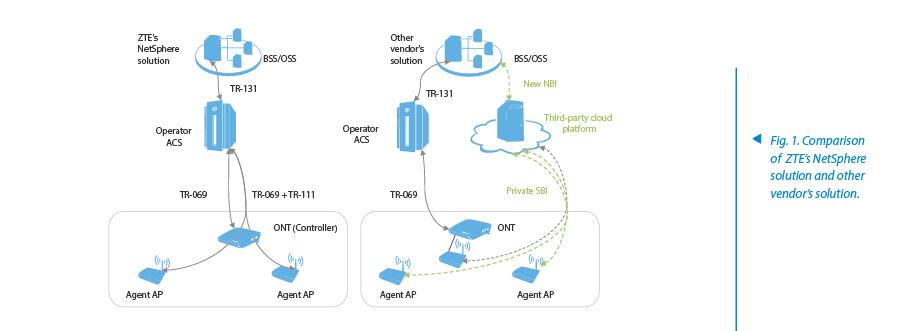NetSphere: Easy and Smart Home Wi-Fi Networking Solution
The rapid development of broadband networks is bringing more and more wireless devices into the home. Statistics from Intel and IGR show that by 2020, each home will have 50 wireless terminals on average and Wi-Fi will account for about 86 percent of the connections in the home. With the emergence of new services such as big video, online gaming, cloud storage and smart home, users demand fast, stable and seamless home Wi-Fi coverage.
The traditional networking mode, which uses a single access point (AP) or an AP plus an extender(s) to deliver home Wi-Fi, no longer meets the market requirements. Using a single AP usually produces several weak-coverage areas or dead zones. Adding APs or extenders improves coverage, but it also poses new problems, such as bad roaming, complex user configuration, weak management, and poor user experience.
The service experience of home Wi-Fi is already a concern for operators as data shows that 60 percent of the complaints from home users are related to Wi-Fi. Because no effective tools are available to locate and solve home Wi-Fi performance problems, handling user complaints is time-consuming, inefficient and costly. Operators therefore press for a visual, manageable and operable home Wi-Fi network.
ZTE has developed NetSphere, the smart home Wi-Fi networking solution, to improve the quality of experience (QoE) of broadband services for users and reduce operating expenditure (OPEX) for operators. The solution provides high-quality, seamless Wi-Fi coverage for the home with multiple APs. Employing cutting-edge technologies like mesh networking, smart roaming, band steering, and efficient O&M, the solution significantly enhances the quality of home networks and improves customer experience.
Advanced EasyMesh Architecture
In 2017, Wi-Fi Alliance (WFA) released the draft multi-AP specification for its Wi-Fi EasyMesh program. This specification defines a protocol for controlling multiple APs in a multi-AP network. The protocol performs functions like startup, configuration, control and management to enable the setup of a Wi-Fi network using APs of different vendors. ZTE's NetSphere solution complies with the technical requirements of EasyMesh V1.0.
NetSphere uses the star or tree network topology, the APs are connected with each other in wired or wireless backhaul mode, and the stations (wireless terminals including cellphones, tablets and computers) are linked to the APs via a cable or wirelessly. When the network environment changes, EasyMesh enables the APs to automatically select new backhaul links, which greatly improves the network robustness and self-healing capability.
Smart Roaming
NetSphere supports the smart roaming technologies 802.11k/v/r, allowing a user device to seamlessly roam and switch to the optimal AP. The switching time is shortened to 10 to
300 ms, which is at least 70 percent less than that of traditional home Wi-Fi solutions and leads to a significantly enhanced service experience.
—802.11k: The AP and the station can implement link measurement, neighbor measurement and radio frequency measurement via 802.11k.
—802.11v: The AP can use the 802.11v protocol to require the station to roam to a specific AP (including the channel and BSSID). The station can also use the 802.11v protocol to query the destination AP of the roaming.
—802.11r: When associating another AP on the same home network, the station does not need to negotiate another temporary key. Instead, it uses the originally negotiated temporary key to associate the target AP, thereby greatly cutting the association time and achieving fast transition.
Band Steering
The band steering technology is mainly used in dual-band APs by enabling them to switch to the less congested 5 GHz network. The switchover can happen both before and after device association, that is, the controller can require a station to connect to a designated band before the station is associated, or it can require the station to switch to another less loaded band after the station is associated because the wireless environment has changed.
By adopting the band steering technology, the NetSphere solution allows the controller to automatically assign the stations to different bands according to the signal strength, the load on the 2.4 GHz and 5 GHz bands, and the need to avoid the interference sources to achieve the optimal user experience.
Fast Deployment and Easy O&M
Compared with the other home Wi-Fi networking solutions on the market, ZTE's NetSphere solution has obvious advantages in metrics from network deployment to user experience and O&M (Fig. 1).

NetSphere has been highly recognized by operators and broadband users across the world for its cutting-edge technologies and low capital expenditure. ZTE leads the global CPE market, having deployed its CPE products in more than 100 countries and regions and counting 10-plus top-tier carriers among its customers.